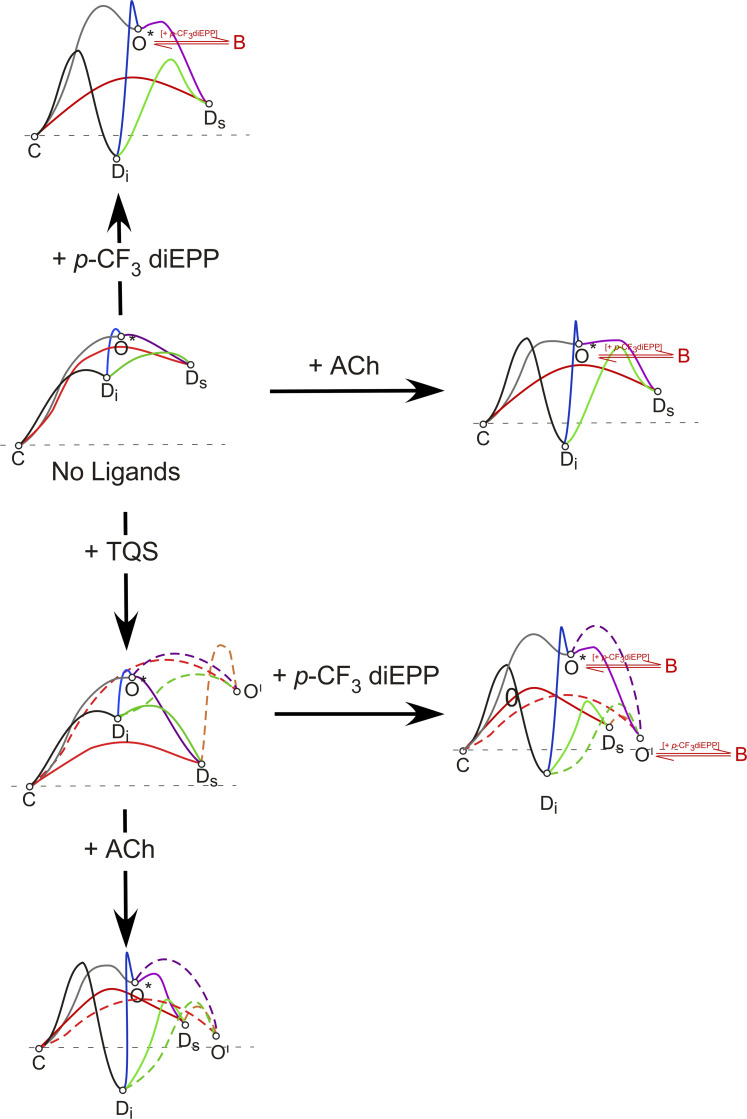Fig. 6.
Hypothetical models for the energy landscape of the conformational states of α7 nAChR. The conformational changes and the corresponding hypothetical energy landscape variations for the α7 receptor as affected by the binding of the very weak partial agonist p-CF3 diEPP with or without the effects of coapplied TQS or ACh. Based on the α7 nAChR states identified in our previous studies, two forms of α7 desensitization [PAM-sensitive nonconducting desensitized state (Ds) and PAM-insensitive nonconducting desensitized state (Di)], a resting closed state (C), a low-probability open state (O*), and a PAM-dependent open state (O′) that can be coupled to the Ds state are shown here. The models refer to intermediate levels of agonist and allosteric modular binding at the orthosteric and allosteric sites, respectively. Such conditions were proven to be the most effective in promoting channel opening (Williams et al., 2011a). For each model, the vertical displacement of the states represents the absolute free energy of the various states, and the height of the energy barriers are inversely related to the rate constants for transitions between the states and are represented by the lines connecting the states. When no ligands are bound, the C state is most stable and transitions to other states are thermodynamically unlikely to happen. Once p-CF3 diEPP is applied, the thermodynamic landscapes of α7 receptors would rearrange in such a way that the probability of entering O* is somewhat increased but still low. Transition to the Ds or Di states becomes most likely. Upon application of TQS alone, the receptor is less likely to enter the desensitized state, and the additional O′ state enters the energy landscapes; however, channels are still unlikely to open. When p-CF3 diEPP is coapplied with TQS, the type II PAM favors the transition from the Ds to the O′ state, resulting in prolonged bursts of receptor openings. The channel blocking components of p-CF3 diEPP (B) affect both the low-probability open state (O*) and a PAM-dependent open state (O′).

